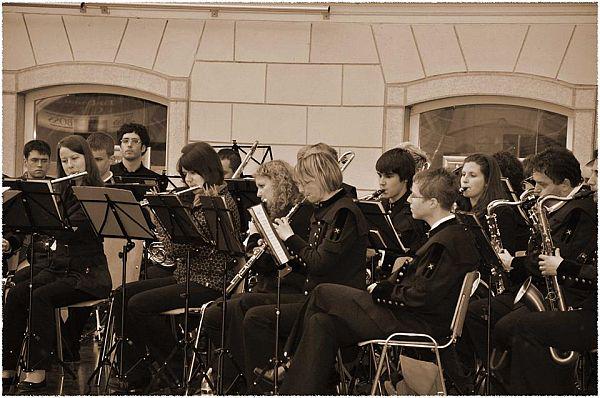
For centuries, the town of Idrija in western Slovenia was famous for its mercury mine. Now closed and preserved as a UNESCO World Heritage site, the mine provided a livelihood to generations of local residents. It also led to the creation of a wind band that is among the oldest in the world.
After mercury was discovered in the area in the 15th century, people from across Europe flocked to Idrija. Some were unskilled laborers, while others, often highly educated, were brought in to manage the mining operations. The wives of miners from the Low Countries introduced a lacemaking tradition that is still treasured in Slovenia as “Idrija lace.”
The abundance of skilled people from across Europe, along with a chronic lack of entertainment in a small town, led to the emergence of a brand-new form of entertainment: the wind band. It probably emerged sometime in the 17th century. Even though the exact date is unknown, the polymath Johannes Weikhard von Valvasor mentioned the band in his masterful volume about the Slovenian lands, which was published in 1686. Regardless of the exact date, its tradition has lived on ever since. In 1857, the band even played for the Austrian Emperor Franz Joseph during his visit to the Postojna Cave.
Through the centuries, the musicians experienced eras of prosperity and times of crisis, when the band’s very survival was at stake. For many years, the wind band was a part of the local miners' militia. In the 19th century, mine officials even contributed a portion of their own salaries to keep the band alive when funding was reduced. Despite the difficult circumstances, the band even survived Idrija’s annexation to Italy in the 20th century. When World War II broke out, many of its musicians joined the Partisan resistance, while the band’s leadership was taken over by a committed Fascist.
After World War II, a golden age began for the band. The Communist regime frequently invited it to perform at various official commemorations. The postwar era ushered in an era of financial stability as well as new international orientation. The band began to perform around Europe; its musicians performed from France to Serbia and often returned home with prestigious awards.
Recently, the Idrija wind band, which now has 62 full-time members, celebrated its 350th anniversary. Because its exact origins remain a mystery, the year selected as the official anniversary was chosen somewhat at random, but the anniversary gave the town – and Slovenia as a whole – a chance to celebrate an institution that has been the pride of its town for generations.


































































